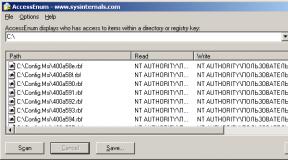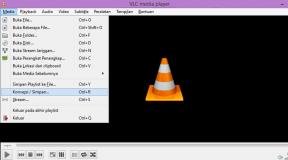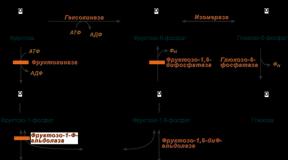Fixing the indoor unit of the air conditioner to the wall. How to install a split air conditioner yourself. Materials and consumables
Are you tired of exhausting from this incredible heat, as well as freezing during the first autumn cold, until the heating is turned on? - Air conditioning will help you. Instructions for installing an air conditioner with your own hands from the site will be a logical continuation of our article, in which we gave advice,.
What parts does an air conditioner installation consist of:
Where to install the air conditioner
Initially, you must determine where you will install the air conditioner and how. You need to start from three factors:
- There should not be too much distance between the outdoor and indoor unit (preferably no more than 3 meters);
- The indoor unit must be positioned so that the airflow coming out of it is not directed towards you;
- The outdoor unit is best mounted in such a way that you have easy access to it.
When you have decided on the location of the indoor unit, consider where the outdoor unit will be mounted. Ideally, it is best to mount it near a window or near a balcony, so you can freely strengthen the outdoor unit, and moreover, you will be able to constantly maintain it. It is also preferable to install the outdoor unit not on the sunny side, but if possible, then in the shade. Sometimes you can see that some people install air conditioning on their balcony, inside - it is illogical to do this for a number of reasons. If necessary, you can order a tower and install an air conditioner in a place that cannot be reached from a window or balcony, but every time you need to order a tower to clean or refuel the air conditioner, which is not rational.
If you have an air conditioner with a capacity of 09 or 12, and you plan for it to work for 2 rooms, then the indoor unit must be installed in such a way that direct air flow enters the 2nd room.
Now you have to think about how the air conditioning communications will go. They can pass both outside and inside the wall. It is difficult to say unequivocally which of these options to choose, since the communications passing inside the wall are more aesthetically pleasing, because they will not be visible. If you carry out communications outside, then you do not need to spend a lot of time making a strobe in the wall for these communications. In turn, we would still advise beginners to carry out communications outside, and hide them in a plastic box.
When you have decided on the place of installation of the air conditioner - we get to work.

Installing the indoor unit
To begin with, attach the indoor unit of the air conditioner to the wall, make sure that nothing will interfere with it and you. In addition, check the symmetry of the indoor unit so that it blends harmoniously with the design and interior of the room. The installation of the indoor unit must be carried out at a distance of at least 15 centimeters from the ceiling in order to ensure free air capture.
In order to hang the indoor unit of the air conditioner on the wall, you need to remove its metal part on the back wall of the indoor unit - the mounting plate (at the same time, practice removing and putting it on). We apply it to the wall and use a pencil to make marks where the fasteners will be. The mounting plate must be fixed in level, if the indoor unit hangs unevenly, then the condensate may not flow into the drain pipe, but will simply start to flow from the air conditioner to the floor. We will fix the indoor unit itself directly to the wall almost at the end. You will also need to determine from which side the communications from the indoor unit will come out and remove the decorative plug from that side.
Next, make a hole in the wall through which 2 copper pipes and an electrical cable will pass, as well as a drainage pipe. To do this, you will need a powerful puncher and a drill of the desired diameter. The opening for the output of communications should be at the level of the bottom of the air conditioner or below. After that, under a slight slope, we make a hole in the wall. When you make a hole, we advise you to collect all the dust with a vacuum cleaner so that it does not scatter throughout the apartment.
And one more little tip: when you make a hole in the wall, that part may break off from it, in the area of \u200b\u200bwhich the hole itself will be made. To prevent such a piece from falling, support a box under something under this section of the wall. When the hole is ready, clean it and proceed to the installation procedure of the indoor unit.

Outdoor unit installation
The next step in installing the air conditioner is the installation of the outdoor unit. The outdoor unit must be hung in such a way that you have Free access to its left side (as a rule, communications are connected from the left side). Thus, the outdoor unit is best mounted under the window or to the right of the window. When you have decided on a place, we make markings on the wall of the house with a pencil. It is very important to do the markup according to the level so that the external block hangs absolutely evenly.
To mount the outdoor unit, use special factory brackets, which are sold in many hardware stores. Never use homemade ones. To fasten the brackets, use 16x100 anchors or three-sided expansion dowels with a hex head screw of the same size, there must be at least 2 of them per bracket. Also use washers between brackets and fasteners. The distance between the brackets should be equal to the distance of the feet on the outdoor unit. If you hang the air conditioner on the side, then first fasten the near bracket, and then the far one, so that later you can hold on to the first one.
It is unnecessary to immediately tighten the anchor or screw to the stop, you just need not to tighten it too much, since it is difficult to make the distance between the fasteners ideally in size, and the possibility of a slight movement of the brackets will help to fit them under the legs of the air conditioner. When the brackets are fixed in the wall, we put special rubber pads on the legs of the air conditioner, which will prevent the vibrations of the air conditioner from being transmitted to the brackets and to the wall. Next, we put the outdoor unit on the brackets and fix it with blots with washers. Now check the evenness of the outdoor unit with a level and then tighten the bracket fasteners to the wall. This completes the installation of the outdoor unit.
We draw your attention to the installation procedure of the outdoor unit. This is very dangerous, do not neglect safety. Use safety devices if necessary.
Laying communications
When the external unit is fixed, it is necessary to conduct communications between them, or, as the installers say, “main line”.
Communications include: 2 copper tubes for refrigerant, a metal-plastic tube for drainage, and an electrical cable that will power the outdoor unit. Now let's look at what is needed and why.
We need 2 copper tubes to circulate the refrigerant between the outdoor and indoor units. Liquid refrigerant is supplied through one tube, and through the other it returns in a gaseous state to the outdoor unit. Condensate will drain from the indoor unit through the drain pipe, and the electric cable will power the outdoor unit from the indoor unit, which will control its operation.
As you can see from the back of the air conditioner, there are 2 copper pipes of different diameters, it is them that we will need to lengthen and lead to the outdoor unit. The connection of the tubes and their connection to the outdoor unit will be carried out using nuts. You will have a completely logical question: how to fix the nut on the tube? - It's very simple, flaring is used for this. What is flaring? With a special device, rolling, a conical tip, the edges of the tube expand, which block the nut and are pulled together with another part of the tube. To make it more clear what it is - pay attention to the picture below.

All nuts for connection are already included in the kit: some are on the valves of the outdoor unit, others are put on the plugs behind the indoor unit. We start connecting the pipes from the indoor unit. For this we need 1/4" and 3/8" copper tubes. After that, unscrew one nut from the tube of the indoor unit and remove it from the plug. To do this, take a cutter and cut off part of the tube with it. Cutting must be done as follows: in the right place where you want to cut the tube, tighten the cutter - make one turn of the scroll, tighten the cutter a little - one more turn of the scroll, then tighten the cutter for the last time and do the scroll, after that the tube is cut off. When the tube is cut off, remove the nut from this plug and put it on a tube of the same diameter, after which we flare its end, after making sure that it is even and that there are no burrs.
To flare the tube, it must be clamped into a mold of the required diameter, making a protrusion 2 millimeters beyond its edge, after which the tube is flared. Do this very carefully so that the flare is even and not beveled. As a rule, when the rolling cone rests against the tube, 4 turns of the lever will be enough. Next, we check the flare so that it is even, without cracks and the nut fits snugly against its walls.
When you have done all of the above with one tube, we do the same with the second. After that, we carefully connect the flared ends of the tubes (air conditioner and line) and tighten the nuts.
The next stage of work is measuring the distance from the indoor unit to the outdoor unit, we need this in order to calculate the required length of the main pipes through the hole in the wall. The length of the pipes must match the distance from the outdoor unit to the indoor unit. You can leave a margin of a few centimeters, but not much. Now that we have the required distance, we cut the tubes with a cutter. It is very important to cancel that the tube must be cut strictly exactly, otherwise the connection will not be airtight and depressurization will occur on it. At the same time, their ends must be well insulated so that dirt does not get inside.

Next, we need heat-insulating tubes with a copper diameter, they will absorb condensate, and also distinguish between the main tubes, since they will have different temperatures. We cut off the desired length of the heat-insulating tube and put each of them on the copper ones.
When the tubes are ready - go to the electrician. We take one part of a piece of a copper four-core PVA cable with a cross section of 1.5 per core, we bring it into the external unit and connect it to the terminals. Now we measure the length from the power supply of the indoor unit to the power supply of the external unit. We cut off the required length of the cable and bring it out together with the rest of the communications from the hole of the indoor unit.
The last thing left for us is to connect the drain tube. A drain hose may be used for this, but is not desirable. A drain tube made of metal-plastic will allow you to set the direction where the liquids drain, but due to the flexibility of the hose, this will not work. The drain pipe is attached to the drain pipe coming out of the indoor unit. Its length should be 20-25 centimeters further than the outdoor unit of the air conditioner, so keep this in mind when you cut it off.
All tubes and cable going to the outdoor unit must be wrapped with a special protective thermal insulation tape. You need to start winding from the indoor unit. Wrapping must be done carefully. At the end, we leave approximately 20 centimeters of an unwound section of communications, so that it would be convenient for us to connect them to the external unit, and also so that we can separately conduct a drainage tube. The end of the thermal insulation tape can be fixed with electrical tape. Now we carefully remove all communications from the recess of the indoor unit. The power cord is output separately.
Next, carefully push the communications into the hole in the wall and attach the indoor unit to the mounting plate. Please note that it is necessary to bend the pipes very carefully so as not to bend them, as this will reduce the permeability of the refrigerant and it will be necessary to redo all the pipes again.
Let's move on to outside work. First, we recommend connecting the power cable to the terminals of the outdoor unit. To do this, unscrew the side cover and connect the wires to the same terminals in the same colors as on the indoor unit. Insert the cable into the special groove in the cover and screw it on.
Now, with the help of electrical tape, we fix the drainage tube to the bracket and slightly bend it down, while making sure that the flowing liquid will not fall on someone's visor, air conditioner or antenna.

So, the external unit was powered up, the drainage tube was taken out - it remains only to connect the tubes to the external unit. You probably guessed that you will again need to do pipe flaring. As mentioned above, the pipe nuts are located on the outdoor unit on the valves from above. Now remove the insulation from the end of the tubes that you made after cutting them so that dirt does not get there. Pull back the heat insulating tube slightly to access the end of the copper tube. We remove the nuts from the valves, put them on the tubes and do the flaring - one by one. Next, another rather difficult moment awaits you: connecting the tubes to the external unit. Gently attach one part of the tube to the other and tighten the nuts. It is impossible to confuse the tubes, since they are of different diameters.
When everything is connected, and the drainage tube is fixed, it is necessary to wrap the rest of the tubes with thermal insulation tape. It is necessary to start winding from the same place where we ended it, overlapping. When winding, we release a drainage tube, and then an electric cable, in those places where it will be necessary. In the place where the tubes branch out, it is advisable to wrap each one separately, but it can also be done together. We fix the end of the thermal insulation tape with electrical tape.
This completes the main procedure for installing the air conditioner, now we move on to checking and preparing the system for launch.
Preparing and checking the air conditioning system
When, it would seem, all the difficult things are behind you, another difficult moment awaits you - preparing the system. First, check if you did everything right. Mentally reproduce all your actions and analyze them. A mistake will be very costly. If everything is done correctly, we move on.
Now we need to expel the air from the line and fill it with freon (refrigerant). To do this, unscrew all the nuts from the taps on the external unit, not the ones that fix the tubes, but the deaf ones. The larger faucet will have 2 nuts, while the smaller faucet will have one. The tap, which is smaller - liquid, larger - air.
Using the appropriate size hexagon, open the liquid valve half a turn and hold it for 5 seconds and close it. Next, we take the same hexagon and press it on the valve located at the bottom of the air valve. Before doing this, put on goggles or turn away to protect your eyes and try to hold your breath. As soon as the hiss ends (it will last about 3-5 seconds), stop pressing the valve. We do this 2 more times.
After that, we take the hexagon and completely open the valve with liquid freon until it stops. After a few seconds, press the hexagon on the lower valve of the air valve and hold for 5 seconds to remove the remaining air. Next, we take a hexagon of a different size and open the side valve of the air valve, also until it stops. The final stage is to tighten the nuts and tighten them.
At the bottom of the outdoor unit there will be a hole into which you need to insert a special plastic tube, which should come with the air conditioner.
Now once again we check the connection of the air conditioner and its installation. Is everything right? - Then let's move on. Open the cover of the indoor unit, check if the filters are installed correctly, and remove any protective stickers. Now we insert the cord from the air conditioner into the outlet and make the first start.
You need to check all modes. First, turn on the cold mode and wait a couple of minutes until cold air starts to flow from the air conditioner, then turn on the heating mode and wait until warm air comes out (if your air conditioner includes this function), then check the other modes.
When we are convinced that all modes are working, we turn on the cooling mode to the maximum, and if there is a “turbo” mode, then it. At the lowest temperature, we leave the air conditioner on for about an hour, maybe more. This is necessary in order to "drive" the system. Check whether the air conditioner in cooling mode switches to fan mode when the set temperature is reached and whether the outdoor unit turns off. After a certain time, set the temperature comfortable for you.

Finally, a few words about the rationality of self-installation. On average, installing an air conditioner costs 3,000 rubles. If we subtract from this amount how much we spent on consumables and on the special tools we need, it turns out that we saved about 2,000 rubles. But given that we spent 4 hours on the independent installation of the air conditioner and in view of the complexity of the installation nuances, we recommend that you think about whether it is worth saving on installing the air conditioner and doing it yourself. It may be better to entrust this matter to professional installers who will quickly install the air conditioner and guarantee you the quality of its work.
Once a year, preferably before the start of the summer season, somewhere in May, clean the air conditioner. We have already given you recommendations.
installing an air conditioner with your own handsClimatic equipment is installed in advance, before the onset of heat. In some cases, to save money, an air conditioner is installed by hand. The main condition is to strictly adhere to the instructions, to carry out work in the recommended place. Incorrectly selected parts can cause damage to the climate control device.
The principle of operation of the air conditioner, split system
To form a general idea of the organization of the internal device, and before installing the air conditioner, we recommend that you consider the principle of operation of the system. Climatic consists of 2 equivalent blocks - compressor and evaporator. They are connected to each other by special adapters, branch pipes and tubes.

The evaporation unit is installed inside the dwelling, and the compressor unit is installed outside. High-performance and expensive models are equipped with one compressor and several indoor units.

High pressure refrigerant is sent to the evaporator section. Then there is an expansion of freon, its gradual boiling and vaporization. It is this cold vapor that absorbs the heat of the air. The air conditioning system works with the active formation of water condensate, which settles on a special radiator. At the final stage, water is discharged from the building through a special tube.

In the process of operation, the compressor pumps out the evaporation of freon. The pressure inside the unit is increased by a built-in pump. Gradually, under the influence of temperature, the refrigerant changes from a liquid state to a vapor state. A dense "fog" is sent to the condensate chamber for gradual cooling (a small fan is used for this purpose) and transition to a liquid state. Then the circle closes and the process loops.

The efficiency and duration of the operation of the house, as well as the amount of electricity consumed by the appliance, are determined by the intensity of operation of the unit, the climatic features of the region. If there is a heater in the room near the climate control device, the level of electricity consumed increases, which is fraught with the failure of the device. Even ordinary dust can provoke a breakdown. The room is scheduled for regular wet cleaning.

Couplings and joints require sealing without fail in order to level the likelihood of freon or other refrigerant evaporation. Install the outdoor unit of the air conditioner so that it is level below the inside of the unit. The outdoor unit is located in a dark place, away from sunlight.
Do-it-yourself air conditioning installation: tools - a complete list
Installation of air conditioning systems is a technically complex, responsible, and therefore expensive event. In this matter, all aspects are important - experience, practical skills, theoretical base and the availability of the necessary tool. These factors determine the speed and quality of installation. Let's analyze the feasibility of using the tools that come with the standard installation kit.

Taking into account the scope of their application, they are divided into several functional groups.
power tool
Without a power tool, installing an air conditioner with your own hands is simply impossible. We are not talking about any specialized solutions:
- perforator;
- "Bulgarian";
- drill.
A powerful puncher is chosen so that it can easily make a through hole in the wall through which a line is laid between the indoor and outdoor units. Low-power combined electric drills, where only the hammer function is provided, in this case not enough. They are not able to drill through brickwork.

Before you install the air conditioner yourself, you should make sure that you have all the necessary tools.
For a concrete wall, you will additionally need a grinder to remove metal reinforcement, as well as other consumables - discs, drills, concrete bits.
Measuring tool
Installation of a window air conditioner is carried out with the obligatory control of the horizontal level. You can use markers, marking pencils, building or laser level. You will also need a number of additional equipment. Air conditioners with installation cannot be reliably and efficiently fixed without additional technical means.

Specialized equipment
Specialized tools are necessary for the high-quality and efficient functioning of climate equipment. Copper pipe soldering tools, industrial type vacuum cleaner and vacuum pump.
- Devices for connecting copper pipes. We are talking about low temperature welding. It is carried out using a special solder and gas burner. A pipe cutter is used to cut them. It is better to refuse an ordinary hacksaw for cutting metal, since small chips will certainly remain in the line, which is fraught with damage to the climate device. To remove the chamfer, use a rimmer, rolling. The main turns are formed by a pipe bender.
- An industrial vacuum cleaner is used to suck up dust and small debris. Under no circumstances should they fall into the appliance.
- Vacuum pump. The unit dries up the line. If you follow the installation rules, then this procedure- mandatory, without it the efficiency of the air conditioner will be nominal.

The listed equipment for installation is basic. You can not do without additional consumables - pliers, drywall, stepladders, metal scissors, screwdrivers. The exact list is determined by the owner, taking into account specific conditions.
Do-it-yourself air conditioner installation: step by step instructions
Do-it-yourself installation of an air conditioner begins only after the acquisition and preparation of the necessary equipment, tools and climatic equipment. First of all, the outdoor unit is fixed on the outer wall, after which internal work is carried out.

At all stages, it is extremely important to observe safety precautions, especially when it comes to skyscrapers. Installation of the outdoor unit is one of the most important and crucial stages.
Outdoor unit fixing
Installing a window in general, and its outer part, in particular, on the walls of country houses is not accompanied by any difficulties. But in the case of multi-apartment buildings, not everything is so simple, the place is selected with great care. When deciding where to install the air conditioner, pay attention to areas with minimal natural light.
There are several basic rules:
- The outdoor unit should not spoil the view from the window to the neighbors in the apartment.
- A small tube is used to drain condensate.
- The climatic device is placed in such a way that it is within reach, because. equipment requires periodic maintenance.

In 90% of cases, the block is fixed at the north or east side, under the window or at the bottom of the balcony. These are the unwritten rules for installing an air conditioner, which are mandatory among professionals. If they are observed, it will not be difficult to reach the outside of the climate control device.
- The attachment points of the brackets are checked with a building level, and then holes are prepared in the wall. Anchor bolts are used for secure fixation.
- To connect the functional blocks, an 80 mm through hole is made. If possible, it is better to drill a hole between the bricks, along the seam.

According to the previously prepared markings, metal brackets are installed, screwing the bolts as securely as possible. The standard installation of the air conditioner is carried out in such a way that a distance of 10 cm is maintained between the climatic unit and the outer wall. The gaps are closed at the final stage, after connecting the device.

Installing the indoor unit
Do-it-yourself air conditioning installation indoors, where to start? First of all, it is necessary to pay attention to the fact that it is strictly forbidden to mount the indoor unit behind curtains, near electrical appliances, above heaters or batteries - all these devices often cause failure of the block processor.
Before installing the air conditioner, you should carefully check the wall for laying heating, water pipes, and electrical wiring in it.





The fastening of a metal plate from standard components for the installation of air conditioners begins only if the work area is completely free: the distance from the ceiling is from 10 cm, from the corner of the walls - at least 5 cm. Two points are connected with a meter and mark a horizontal line. The indoor unit is mounted on a fixed metal plate.

The next stage in the installation of the air conditioner, or to be more precise, its indoor unit, is the preparation of holes in the wall for connecting communication hoses, electrical wiring, and pipes for draining liquid condensate. The interior space should be sufficient for free placement of all elements in the wall.
Independent installation of the air conditioner is not possible without separate wiring for the indoor unit. For this, wiring with a cross section of at least 1.5 square meters is suitable. mm. It is mandatory to connect a separate machine for the climate control device. Upon completion of the wiring, it is connected to the input of the shield (the indicator can accurately determine the "phase" and "neutral" wire).

The terminals of the outdoor and indoor units are connected to each other with multi-core wiring (it is pushed into the hole prepared in the wall). The installation scheme is clearly described in the instructions that come with each climate control device. At self installation air conditioners at home, it is extremely important that the terminals by name match the wires themselves. Otherwise, there is a danger of a short circuit.



Pipe laying instructions
A standard air conditioner installation kit includes several copper pipes. They are carefully cut with a margin of 1 meter for bends. The tubes are prepared with a special tool - a pipe bender, when using it, the metal does not crack, no dents form. Proper preparation includes covering the pipes with polyurethane foam hoses that act as thermal insulation.

Special threaded flanges are put on the ends of the tube. The next stage of installation work is high-quality flaring of copper tubes. This process is carried out extremely carefully in order to eliminate the risk of grooves and microcracks. The nut should fit onto the rolling without any problems. As for tightening, it is performed with a special torque wrench.
Do-it-yourself installation of the air conditioner continues: pipelines are attached to the fittings. It is impossible to confuse anything, because. copper pipes have different cross-sections and diameters. The flanges are securely screwed onto the fittings, while the connection must be extremely tight, but at the same time, the tube should not be pinched or damaged.

At the final stage, the installation of air conditioning systems comes down to connecting a plastic pipe to a reinforced housing. For reliable fastening, use a heat-shrinkable tube from the delivery set. It is better to put a drainage tube at a maximum distance from the base of the wall.
Installation and installation of air conditioners will be incomplete without placing pipes in a special hole made in the wall. There they are carefully and extremely accurately aligned. Outside, the outlet and underwater pipes are fixed with clamps for greater reliability. An electrical wire is placed near them for connection to the outdoor unit.

In the room, the holes are blown out with mounting foam, as an alternative, they are filled with liquid silicone. Installing an air conditioner on a balcony and in a house involves checking the structure for leaks with a soap solution or a bicycle pump. Soap solution is washed with a sponge or cloth. If defects are found, the thread is tightened tighter.
Vacuuming the air exchange system
The correct installation of the air conditioner with your own hands is described above. The owner should be aware that to remove moisture, dust and the smallest particles from the climate device, the system is evacuated. It is performed upon completion of the final and high-quality sealing of the joints, because it is impossible to get rid of the air completely. The air conditioner with the installation is connected to a vacuum pump, air pumping takes about 1 hour.

Freon or other refrigerant is pumped into the system. The tank on the balcony is filled with a pressure gauge or adapter connected, since it is necessary to strictly control the pressure in the system. After preparing the air conditioner, a special automatic disconnector turns on independently, and the system goes into test mode. With uniform and efficient air circulation, the hole in the wall is sealed with mounting foam, followed by decor.
Mounting industrial air conditioners performed exclusively by professionals, because these are expensive climatic complexes for the adjustment of which specialized equipment is required. Spare parts are included in the standard package, you do not have to buy anything in addition.

Now you know how to install the air conditioner yourself and in what sequence to perform the corresponding work.
Installing an air conditioner with your own hands: the secrets of professionals
The installation scheme of window air conditioners provides for the possibility of installation in the winter. That's just have to be content with not too comfortable conditions. Water or snow must not get into the line. It is better to install and pump the refrigerant at positive temperatures outside the window (at sub-zero temperatures, the stuffing box often fails, since it is rubber).

To install air conditioners, it is not at all necessary to evacuate the system. The nut is not completely screwed to the copper tube, then the control valve located at the thick tube opens slightly. Under pressure, the air will be forced out by freon, and it will be necessary to quickly tighten the nut.
This method is incorrect, since the quality and sealing of the system cannot be verified. Installation of industrial air conditioners using this technology is not carried out.
Below is a detailed video instruction, which demonstrates the main stages of installing climate systems with your own hands.
Climate technology and, in particular, split systems, which are habitually called air conditioners, help to survive the summer heat and stuffiness. The equipment is not cheap, but the worst thing is that for its installation it is required to pay an amount slightly less than for the equipment. Because many think about self-assembly. Installing an air conditioner with your own hands is possible, but there are many little things and features, ignorance of which leads to rapid wear of the equipment. Detailed step-by-step instruction will help you get things right.
Location selection
Installing an air conditioner with your own hands begins with determining the location of the equipment. Since split systems consist of two or more blocks, you will have to choose a place for both. In this case, it is necessary to take into account how cold air will spread in a house or apartment, as well as take into account technical requirements.
Let's start with the technical requirements. When choosing the location of the indoor unit, we take into account the following requirements:
- from the block to the ceiling - at least 15 cm (for some manufacturers, at least 20-30 cm);
- to the wall on the side - at least 30 cm;
- to the obstacle against which the flow of cold air will break - at least 150 cm.

The outdoor unit is usually placed near a window or on an open balcony, if there is one. On a glazed balcony / loggia, installation on a fence (if it has sufficient bearing capacity) or next to a wall is possible. If you live on the first or second floor of a high-rise building, they try to put the outdoor unit above the window level - away from passers-by. On higher floors, it can be placed under a window or on the side.
If the installation of an air conditioner with your own hands is planned in a private house, a place is usually chosen based on the bearing capacity of the walls. If there is a ventilated facade, you can use a special mount or hang the unit on the plinth, if any.
When choosing the location of the split system blocks, you must also remember that in most cases the minimum and maximum distance between the blocks is normalized. Specific figures vary by manufacturer. For example, the minimum distance can be 1.5 m, 2.5 m (various Daikin models) and even 3 meters (Panasonic). For some manufacturers, the minimum length is not regulated, that is, it can be any. In this case, you can install the blocks "back to back". Installers call this installation method a “sandwich”.

Slightly easier is the situation with the maximum distance between two blocks. It is usually 6 meters. It may be more, but then additional refueling of the system with freon will be required, and these are additional costs, and considerable ones. Therefore, they try to invest in the required 6 meters.
What you need for self-assembly
You probably know how much it costs to install an air conditioner by specialists. When asked where such prices come from, because the work is only 3 hours, they answer that very expensive equipment and its depreciation makes up a significant share of the cost. This may be true, but most of this equipment may already be on the farm. The exception is a vacuum pump, but many crews do without it, since a normal one really costs a lot, but a bad one is of no use.

Equipment
So, to install an air conditioner with your own hands, you will need the following equipment:

For an ideal installation, a vacuum pump is needed, but usually there is nowhere to take it and on tracks up to 6 meters they do without it.
materials
To connect and install two blocks of split systems, you will need the following consumables:

This is all that is needed to install the air conditioner with your own hands.
Installation procedure and features of the work
There is nothing super complicated in self-installation of a split system, but there are a lot of nuances that can affect the durability and quality of the equipment. First of all, before starting work, you should carefully read the installation and operating instructions that come with the equipment. You compensate for the time spent by knowing exactly what and how to do with your air conditioner, because there are some nuances.

Start - mount the blocks
Before starting all work, it is worth looking for hidden wiring or heating pipes in the intended installation site. Getting into them at work is very sad. Further goes already actually installing the air conditioner with your own hands. You need to start with the installation of the indoor unit. On the selected place we place a plate for its fastening. The block must hang strictly horizontally without the slightest deviation. Therefore, we carefully approach the marking and fastening.
We apply the plate, set it according to the level, mark the places for fasteners. We drill holes, insert plastic plugs under the dowels, hang the plate and fix it with dowels. Attach with particular care lower part plates - here are the latches that hold the block, so they must be firmly fixed. No loopholes. Then check the horizontal position again.

Having estimated where the track will be located (it should go at an inclination of at least 1 cm per meter - for normal drainage installation), we begin to drill a hole in the outer wall. We also drill the hole with a slope - again, so that the condensate normally leaves (the angle can be greater than that of the route).
The minimum hole diameter is 5 cm. If there is no drill of this size, you can make several holes of a smaller diameter, bring out not a common bundle of communications, but each tube / cable separately. In any case, it is better to drill two holes - one for the copper and electrical cable, the second for the drain tube. It must be laid below the rest - so that it does not numb on communications in an emergency.

If two units are mounted back to back, the hole must be strictly aligned (measure on your own unit where the connection ports are)
Then install the brackets for the outdoor unit. If we are talking about a high-rise building, you will need climbing equipment and skills to work at height. This block must also hang strictly horizontally, so we also use the level when marking the holes. When mounting the brackets, we install fasteners in each hole, no matter how many there are - this is a prerequisite. Standard fasteners - anchors 10 * 100 mm. More is possible, less is highly undesirable.

After the brackets are fixed, expose the outdoor unit. We also fix the block in all the fasteners that are. This is the only way to ensure that it stays in place under any conditions.
Laying communications
Two blocks are connected by an electric wire, two copper tubes. Also, a drainage tube is brought out through the wall. All these communications must be properly selected, connected, laid and fixed.

Copper tubes
We start with copper pipes. One larger diameter, the other smaller. Dimensions are indicated in the instructions for the air conditioner. We cut off a piece of the required length with a pipe cutter, process the edges from burrs with a special tool, straightening and leveling the cut. It is undesirable to use a conventional saw, as well as a file to remove a burr - there will definitely be sawdust inside the pipe, which will enter the system and quickly destroy the compressor.
Heat-insulating tubes are put on the prepared pipes. Moreover, the thermal insulation must be continuous and pass inside the wall as well. The joints of the pieces of thermal insulation must be glued with metallized tape, achieving a very tight fit of the edges. The quality of thermal insulation is important, since condensation will form on the non-insulated sections of the pipes, and it can drain inside the wall, causing frozen streaks, destroying the wall.

Copper pipes wrapped in thermal insulation must be passed through a hole in the wall. Before that, it is imperative that the edge that will be inserted into the wall be carefully sealed so that dust does not get inside the pipe (or it is better to plug both ends securely immediately after cutting and leave the plugs before starting the connection). This is a very important point, as dust will quickly disable the compressor.
Cable and drainage
It's easier with electric cable. Each wire is terminated with special lugs, installed on conductors that have been stripped of insulation and crimped with tongs. The prepared cable is connected according to the diagram, which is in the instructions.
On the indoor and outdoor units, above the ports for connecting copper pipes, there is a removable plate, under which there are connectors for connecting the cable. Before you start installing the split system yourself, remove the plates, consider what and where you need to connect - it will be easier to work later. Especially with an outdoor unit.

Connecting the drain pipe is generally simple: it is connected to the appropriate outlet on the indoor unit and led out through the wall. The length of this tube should be such that it ends at a distance of 60-80 cm from the wall. Laying the drainage pipe should be done with a slope towards the exit to the street. Slope not less than 1 cm per meter long. More is possible, less is not.
The tube must be fixed every meter so that sagging does not occur in it. Condensation then accumulates in them, which may end up on your floor or on furniture. When you pass the tube through a hole in the wall, it is also better to muffle it with something.

Indoors, pipes and cables are usually wrapped with metallized tape into a single bundle. Then they are fixed to the wall in several places, a plastic box is attached on top. Usually it is taken in white or a color suitable for finishing.
If you wish, you can hide all the tubes in the wall - gouge the track in the wall, lay it there and, after checking the performance, wall it up. But this is a rather risky option, since in order to repair something you will need to disassemble the wall.
Connecting blocks
Here, in general, there are no special secrets. The communications stretched through the hole in the wall are connected to the appropriate connectors. There are no problems with connecting the cable - connect the wires of the same color to the terminals that are already connected to them. In this case, you can't really go wrong.
If the height difference in the installation of blocks exceeds 5 meters, it is necessary to make a loop to catch the oil (we lay copper pipes in this way) dissolved in freon. If the drop is lower, we do not make any loops.

Drainage
There are two ways to divert drainage from the split system - into the sewer or just outside, out the window. The second method is more common with us, although it is not very correct.

Connecting the drain tube is also easy. A corrugated hose is easily pulled onto the outlet of the drainage system of the indoor unit (a tube with a plastic tip at the bottom of the unit). To keep it secure, you can tighten the connection with a clamp.
The same is the case with the drainage from the outdoor unit. Exit it at the bottom. Often they leave everything as it is, and the water just drips down, but it's probably better to put on a drainage hose too and take moisture away from the walls.

Outdoor Unit Drainage
If not a hose is used, but a polymer pipe, it will be necessary to select an adapter that will allow you to connect the outlet of the air conditioner and the tube. You will have to watch on the spot, because situations are different.
When laying a drainage pipe, it is better to avoid sharp turns and certainly not to allow sagging - condensate will accumulate in these places, which is not good at all. As has been said more than once, the tube is laid out with a slope. Optimal - 3 mm per 1 meter, minimum - 1 mm per meter. Throughout it is fixed to the wall, at least every meter.
Freon circulation system
It is somewhat more difficult with connecting copper pipes. They are carefully laid out along the walls, avoiding kinks and creases. For bending, it is better to use a pipe bender, but you can get by with a spring one. In this case, sharp turns should also be avoided, but in order not to bend the tubes.

The ports on the outdoor unit look like this. Same on the inside.
From the beginning, we connect the tubes in the indoor unit. On it, we twist the nuts from the ports. As the nuts loosen, a hiss is heard. It's nitrogen coming out. This is normal - nitrogen is pumped in at the factory so that the insides do not oxidize. When the hissing stops, take out the plugs, remove the nut, put it on the tube, and then start rolling.
rolling
First, remove the plugs from the pipes and check the edge. It should be smooth, round, without burrs. If the section is not round during cutting, use a calibrator. This is a small device that can be found in the forehead shop. It is inserted into the pipe, scrolled, aligning the section.
The edges of the tubes are carefully aligned for 5 cm, after which the edges are flared so that they can be connected to the inlet / outlet of the blocks, creating a closed system. The correct execution of this part of the installation is very important, since the freon circulation system must be airtight. Then refueling the air conditioner will not be needed soon.

When flaring, hold the pipe with the hole down. Again, so that copper particles do not get inside, but spill out onto the floor. In the holder, it is clamped so that it sticks out 2 mm outward. That's right, no more, no less. We clamp the tube, put the flaring cone, twist it, applying solid efforts (the tube is thick-walled). The flaring is finished when the cone goes no further. We repeat the operation on the other side, then with the other tube.

If you have not rolled pipes before, it is better to practice on unnecessary pieces. The edge should be smooth, with a clear continuous border.
Port connection
We connect the flared edge of the pipe to the corresponding outlet, tighten the nut. No additional gaskets, sealants and the like should be used (forbidden). For this, they take special tubes made of high-quality copper so that they provide sealing without additional funds.

You need to make a serious effort - about 60-70 kg. Only in this case, the copper will flatten out, squeeze the fitting, the connection will become almost monolithic and precisely sealed.
The same operation is repeated with all four outputs.
Vacuuming - why and how to do it
The last stage, which ends with the installation of an air conditioner with your own hands, is the removal of air and moisture, argon residues from the system. During installation, humid air from the room or from the street fills the copper pipes. If it is not removed, it will enter the system. As a result, the compressor will work with a greater load, it will heat up more.

The presence of moisture also adversely affects the performance of the system. The fact is that freon, which is filled with air conditioners, contains a certain amount of oil to lubricate the elements from the inside. This oil is hygroscopic, but saturated with water, it lubricates the insides less effectively, and this leads to their premature wear.
From all this it follows that the system will work without air removal, but not for very long and with possible shutdown due to overheating (if there is such an automation).
There are two ways to remove air from the system: using a vacuum pump or some amount of freon released from the outdoor unit (it is charged at the factory and has some excess freon - just in case).
The "puff" method
On the ports of the external unit, unscrew the valve plugs (in the photo they are indicated by arrows).

We will carry out operations with the lower port (larger diameter), which sticks out perpendicular to the body. Under the cover there is a socket for a hexagon, we select a key that is suitable in size.

Under the cover is a valve with a hexagon socket
Next, with this key, turn the valve 90 ° for one second, return it to its previous position. We let some freon into the system, it created excess pressure. We press a finger on the spool, which is located on the same port. By this we release a mixture of freon and gases located there. Press for literally seconds. Part of the mixture should remain so as not to start a new portion of air inside.
You can repeat 2-3 times, no more, the second time you can turn the valve located above. With a track of 2-3 meters - you can 3 times, with a length of 4 meters - only two. Freon is not enough for more.
When the air is practically removed, we screw the plug onto the outlet with the spool (filling), open the control valves (under the hexagon) completely, launching the freon into the system. We coat all joints with soapy foam to make sure that they are airtight. You can run.
Vacuum pump
This operation requires a vacuum pump, tube high pressure, a group of two manometers - high and low pressure.
Without opening the valves on the control valves, we connect the hose from the vacuum pump to the inlet with the spool, turn on the equipment. It should work 15-30 minutes. During this time, all air, vapors, nitrogen residues are drawn out.
Then the pump is turned off, the pump valve is closed but not disconnected and left for another 15-20 minutes. All this time it is necessary to observe the readings of manometers. If the system is tight, there is no change in pressure, the pressure gauge needles froze in place. If the arrows change their position, there is a leak somewhere and it needs to be fixed. You can find it with soap suds and tighten the connection (usually the problem is at the point where the copper pipes are connected to the outlets of the blocks).

If everything is fine, without disconnecting the pump hose, fully open the valve, which is located below. Some sounds are heard inside the system - freon fills the system. Now, with gloves, quickly twist the hose of the vacuum pump - a certain amount of ice freon can escape from the valve, and you don’t need frostbite. Now we completely unscrew the valve at the top (where a thinner tube is connected).
Why in that order? Because when filling with freon, the system is under pressure, which quickly closes the filling port when the pump is disconnected. That's all, the installation of the air conditioner with your own hands is completed, you can turn it on.
In fairness, it must be said that such an operation - vacuuming - is carried out only in Russia and neighboring countries. In the same Israel, where air conditioners work all year round, nothing like this is done. Why is a matter for thought.
An air conditioner is an electrical appliance that refreshes the room in summer and heats it when the temperature drops to zero. Installation of a split system or other climatic device has a number of features and nuances. Knowing them and observing the requirements of technology and safety, you can easily install the equipment yourself.
Principle of operation
An air conditioner is a technically complex device designed to maintain a microclimate in a room. Individual models may differ in the way air is supplied, the number of blocks, power, size and other parameters.
For example, based on the number of blocks used, there is the following classification:
- Monoblocks. All functions are performed by one block. This design is easy to maintain and operate, has a long service life. The main disadvantage is the high cost.
- Split systems. The design consists of two independent blocks. The first is mounted on the outer wall of the house, the second - inside. The blocks are connected by a tube through which freon moves. The indoor unit contains the evaporator and fan, other parts are placed in the external one.
- Multisplit systems. With one external, such structures have a different number of internal blocks. This is convenient if the owners plan to provide an optimal microclimate in several adjacent rooms.
This air conditioner consists of two units, communications and remote control
Regardless of the model, the functioning of any climatic device is based on the property of liquids to give off heat during condensation and absorb it during evaporation.
The main units of the unit include:
- The compressor in which freon is compressed, after which it is sent to the refrigeration circuit.
- Evaporator. Here the refrigerant evaporates and passes into the gaseous stage.
- The condenser responsible for the reverse process is the transition of freon to the liquid stage.
- Expansion valve (TRV), which reduces the pressure of the refrigerant before it is sent to the evaporator.
- Fans blowing all important parts.
All nodes, with the exception of fans, are connected by copper pipes. As a result, a refrigerant circuit is formed, with a constantly circulating refrigerant mixed with compressor oil.
The principle of operation of most air conditioners is as follows:
- The evaporator sends gaseous freon to the compressor. At this point, the temperature of the refrigerant reaches 10–20 degrees at a pressure of 3–5 atmospheres.
- Freon is compressed in the compressor. There is an increase in pressure to 15–20 atmospheres and heating of the refrigerant to 80–90 degrees. After that, it is redirected to the condenser.
- In the condenser, the refrigerant cools and becomes liquid. The air passing through the node is heated.
- Next, liquid freon, which is under high blood pressure, is transferred to the TRV. In most household units, this device is a copper spiral pipe. In the process of circulation, the pressure and temperature of freon decrease, some of it evaporates.
- The freon then goes to the evaporator. Here it finally takes on a gaseous form, cooling the room where the air conditioner is installed. The air in the room becomes cooler. Next, the gaseous refrigerant under reduced pressure is supplied to the compressor and the cycle begins to repeat.
All air conditioners work according to this principle, regardless of the number of units and other features of a particular model.
Tools and equipment
Installation of split systems and multi-split systems is best done simultaneously with overhaul premises. If the walls are already finished, you can safely order a new cladding.
For installation, you will need the following set of tools and materials:
- Powerful puncher and a set of chisels. When installing, you will need to drill a hole with a diameter of 10 centimeters in the bearing wall.
- Pipe cutter. It is not allowed to cut the refrigerant pipes with an ordinary hacksaw. Copper filings and chips, which will inevitably remain after cutting, will quickly disable the compressor.
- Armature detector. When installing a split system in a concrete wall and hitting the fittings during work, you will have to make another hole.
- Pipe flaring kit.
- A bicycle pump that checks the tightness of the system.
- Vacuum pump. It checks the system for leaks.
- Manometer, phase indicator, tester.
It removes moisture and air from the system for a subsequent leak test.
The specific set of materials depends on the type of air conditioner being installed and installation features. In particular, to install a split system, you will need the following:
- Copper pipes with reverse nuts and heat-insulating material. Necessary for laying the track.
- Electric machine for 20A and cable.
- Decorative boxes for laying pipes, drainage and electrical cables. If the routes are laid in strobes, the electrical wiring will be placed in the corrugated pipe.
- Brackets for mounting remote and indoor units.
- Drainage hoses.
- Fittings, bolts, fasteners, screws, dowels, etc.
It is better to purchase a copper tube with some margin. With a sufficiently long piping, it is possible to lower the outdoor unit a little lower. This allows you to compensate for a small overspending on the purchase of a good thermosyphon.
When buying a pipe in a bay, you need to make sure that its ends are rolled by the factory method. Cracks and dents are excluded.
Preparatory work
Before proceeding with the installation of the air conditioner, it is necessary to carry out a number of preliminary procedures and calculations. First of all, you need to decide on the place where the installation will be made.
Choice of mounting location
The quality of air conditioning, the well-being of the owners living or working in the premises, the design of the house or apartment depend on where the air conditioner is installed.
The choice of location for a window air conditioner is obvious. Mobile air conditioner can be installed in any desired location. The main problem is with classic split systems.
When choosing a place for installation, in particular, the indoor unit, you can be guided by several recommendations:
- Do not place the device on the wall opposite the entrance to the room.
- The distance from the block to the ceiling should not be less than 10 centimeters.
- The air flow is directed to the side where people are least infrequent. If the split system is installed in the bedroom, it should be placed away from the bed. If remote mounting is not possible, the unit can be mounted overhead to allow cold air to flow to the feet.
- The air conditioner is installed at some distance from the cabinets. If the furniture stands next to and slightly below the split system, air currents, blowing dust from the top cover, form a dusty curtain.
- The duct route can be laid in ducts or pre-equipped gates. The minimum length of the duct can reduce the cost of installing a split.
The place for installing the outdoor unit is selected separately. The easiest option is to place the block on the outer wall of a balcony or loggia. It can also be installed on the roof. The second method is relevant for residents of the upper floors. high-rise buildings.
Checking the air conditioner
Before carrying out installation work, the air conditioner must be carefully inspected. The owner must ensure that the unit has not been damaged in transit and that all parts specified in the package are included.
When inspecting the air conditioner, make sure of the following:
- The outdoor unit of the split system should not have dents, cracks or other deformations.
- There must be no foreign elements at the joints. The thread must be clean and free from damage. Deep scratches on the metal are unacceptable, this is a sign of marriage or unskilled dismantling.
- There are stickers on the outdoor unit that detail the manufacturer, power and other information about the air conditioner. All these data must match the instructions.
- The electrical circuit of the air conditioner must be located under the cover or in another accessible place.
- The package of the split system must include screws with which the remote unit is attached to the bracket. If their presence is not provided by the manufacturer, they are purchased separately.
- Damage to the indoor unit is not allowed.
- Filters must be free of stains, odors, and traces of detergents. If this is present, then the air conditioner was in use and washed.
If there are no visible deformations, you can check the operation of the air conditioner. To do this, the indoor unit of the split system starts in the “fan” mode from the nearest outlet. Other modes do not need to be checked, this will lead to incorrect operation of the device. If everything works properly, you can disconnect the unit from the network and continue with the installation.
Do-it-yourself installation of air conditioners
There are several types of air conditioners on the HVAC market. The most common among them are conventional and multi-split systems, window, floor and channel models. The installation of each of them has its own characteristics. Let's analyze the installation of all systems in more detail.
split system
It is the most common type of air conditioner. This is a structure consisting of two blocks connected to each other. One of them is located indoors and provides an optimal climate, the other is installed outside.
outdoor unit
Installing the external part is the most difficult part of installing a split system. When designing high-rise buildings, such work is carried out with the help of industrial mountaineering.
First, brackets are attached to the wall of the building. With some models of split systems, they are included, for others they will have to be purchased separately. For fixing parts, anchor bolts are used, which are purchased complete with brackets. Thanks to a reliable fastening, the block will not fall, even if it freezes.
When installing the unit, it is necessary to observe the distance from the walls. Specific figures are indicated in the documentation for the split system. The structure is placed horizontally, during installation it is necessary to use the building level.
Some blocks weigh more than 100 kg. They require a lift to install.
The installation technology is as follows:
- Holes for anchor bolts are drilled strictly perpendicular to the wall surface.
- The minimum distance that the block must be moved away from the wall is 20 centimeters. The exact numbers are indicated in the instructions.
- All communications suitable for the block are securely fixed.
- Directly above the unit there should not be any architectural structures, as well as other air conditioners. A small visor is installed on top.
- The mass of the block can exceed one hundred kilograms. When choosing a bracket, it is necessary to take into account that it must withstand double weight unit: this will allow it to endure the effects of various weather phenomena.
The maximum distance that open communications of a split system can go along the wall does not exceed 1 meter.
The installation of an air conditioner on a ventilated facade and a loggia has its own characteristics. The complexity of the first case lies in the fact that the building is already lined with a layer of insulation and porcelain stoneware fixed on metal rails. Installation on a ventilated facade is carried out as follows:

Certain nuances are also associated with the installation of an air conditioner on a balcony or loggia. Installation of the outdoor unit inside the building is prohibited, because it is often placed on the parapet. Some homeowners install a split inside a glazed loggia. In this case, the windows must be left open, otherwise the system will not work normally.
indoor unit
The unit is installed under the ceiling, with a certain distance from the walls. The distance to the nearest surfaces for each model is determined individually and is indicated in the attached documentation. When installing, please note that the indoor unit is installed higher than the outdoor unit.
The system is installed in two ways:
- Parallel to the floor. The design is exhibited according to the building level.
- With a slight slope (about 5 degrees) to the drainage. This makes it easier to drain the condensate.
Before starting installation work, the points of attachment to the wall are marked. For this, chalk and a building level are used.
The mounting plate is attached first. Most often it is included in the installation kit. If the package is incomplete, it is necessary to measure the parameters of the block and purchase the part. 4-6 screws are used for fastening.
A block is installed on the plate. For unhindered access to the fittings for further work, you can put a small object under the air conditioner, for example, a screwdriver.
If there are increased high-frequency vibrations in the room, for example, from machine tools, it is not necessary to install a split system here.
Laying the route and communications
A hole is needed to carry out the necessary communications. It is drilled with a perforator, the diameter of the drill is up to 5 cm. If drainage is laid in the same route, the channel is made with a slight slope (up to 10 degrees) to the street. The route section is laid into the wall, if this is not possible (for example, after repairs in the room), it is possible to carry out outdoor installation using a decorative box.
The standard communication route includes:
- Freon line - copper tubes of a given length.
- Wiring.
- Drainage - sporadically.
Freon pipes, wiring and drain hose are laid
The length of electrical wiring and pipelines depends on the length of the route, taking into account a small margin. Copper pipes are cut with a pipe cutter; when using a grinder or other devices, sawdust and burrs appear. Before installation, the pipes are placed in a heat-insulating shell - this excludes the penetration of construction waste into the interior.
With external laying, communications can be hidden in the cable channel
After laying, it is necessary to connect the wiring and the freon pipe. The wiring diagram is contained in the instructions supplied with each air conditioner.
To connect a freon pipe, it is necessary to adjust its size, remove burrs (if any), thread nuts and flare the edges. After that, the pipes are brought to the fittings of both blocks, connected, the nuts are tightened with a wrench. Ensure that all connections are completely sealed.
Drainage
For drainage, a reinforced plastic pipe is used. It is connected to the drain pipe, for which a threaded flange is used (if this method is provided for by the design) or a heat-shrinkable tube.
According to technology, the drainage is discharged into the sewer. In practice, many owners take the handset outside the house. It is important that it does not bend upwards: water accumulates at the bend, fungi and microbes appear and spread in it.
Final works
After installing communications, laying the route, etc., the line is checked for tightness and evacuated. The pump is connected to the port using a manometric manifold and pumps out air for 20 minutes. Then the device turns off, after which it is necessary to observe the pressure for some time. If within half an hour the readings on the pressure gauge have not changed, the system is considered sealed.
After the final check, you can open the taps on the outdoor unit, fill the system with freon. Refrigerant leakage is not allowed: this not only provokes malfunctions in the split system, but also negatively affects human health. Next, the structure is connected to the network. In most domestic air conditioners, power is supplied to the indoor unit, for which you just need to put an electrical outlet nearby.
Video: step by step installation
How to install a window air conditioner yourself
Installing a window-type air conditioner does not require laying tracks, carrying out high-altitude work and other difficulties inherent in installing split systems.
Free gaps are closed with decorative inserts
When working, you must follow the specified sequence of actions:
- Site preparation. The glass is removed, a "jumper" is placed.
- Bracket mounting.
- Block installation.
- Connecting a drain hose, if provided by the design.
- Connecting the air conditioner to the power supply.
Video: connecting a window structure
floor system
The floor conditioner also does not demand installation of the external block and can be established in any place. It is only necessary to ensure the removal of heated air outside the room. Some simply lead the air duct to an open window - this minimizes the operation of the air conditioner itself.
To prevent heated air from entering the room from the street or from the duct, it is necessary to equip the ventilation duct. To do this, you can order a plastic window with a suitable hole in the profile organization, or purchase plexiglass and cut it with your own hands.
An open window makes it pointless to cool the room
To make a hole of suitable size in plexiglass, you need to attach an air duct to it, circle it in a circle and cut a hole. An improved soldering iron is suitable as a cutting tool: an incision is made in the “sting” of the tool, into which a blade from a breadboard knife is inserted. During operation of the device, the blade heats up and begins to cut plastic.
ducted
The main advantage of channel-type air conditioners is the ability to combine cooled air with outdoor air, thereby performing ventilation functions. To do this, an additional air duct is supplied to the unit. The following procedures are required to organize a mix:
- A hole for the air duct is drilled in the outer wall.
- From the side of the street, a grate is inserted into the hole. An electric valve is installed next to it. When the air conditioner stops, it blocks the air supply.
- Air duct is installed. Air will flow through it into the filter.
- Further along the circuit, an electric heater is installed. Filtered air enters it. Heating ensures optimum room temperature in winter.
- The final node is a duct fan that circulates air.
The installation of the ducted air conditioner itself consists of the installation of an external and internal unit, as well as a pipe system. The outdoor unit is the same as a conventional split system. The indoor unit is installed under suspended or suspended ceilings.
If the installation takes place in a private house, it can be placed in a technical or attic room.
The peculiarity of this type of air conditioner is that it can be used to control the microclimate in several rooms without compromising the interior decoration. This is ensured by a system of ventilation ducts, from which heated or cooled (depending on the settings) air passes from the unit through drilled and barred diffuser holes into the rooms.
The air is distributed through the pipes and through the diffusers enters the room
Some models allow vertical mounting. In this case, the unit is located in the gap between the walls. This must be foreseen at the stage of construction of the building. Some models can be mounted on a load-bearing wall and hidden with a false column or partition.
The winter kit allows you to use the split system at very low temperatures. The package includes:
- A device that heats the crankcase of the compressor of the outdoor unit. Thanks to him, a "cold start" becomes impossible.
- Fan speed control device. It redirects the air flow and prevents the inside of the air conditioner from freezing.
- Drainage heating device installed in the indoor unit. Thanks to this detail, icing of the condensate outlet is excluded.
Modern devices are equipped with their own thermal sensors and automation.
Installation is as follows:
- The protective covers and top cover of the outdoor unit are removed. The front panel is removed. The need to remove the rear wall depends on design features specific model.
- The connection diagram of the fan controller depends on the type of connected device. For example, Fasec-33 is installed in the neutral break (wires that go to the capacitor), the Ballu device is built into the phase break.
- The crankcase heater is built into the bottom of the compressor and connected to the power supply. Modern models have their own temperature sensor, and when the set temperature is reached, the heating turns off automatically.
- Band-type heaters used for the drain system are installed directly inside the hose and are powered from the crankcase heater or compressor start terminals. Drains need to be warmed up only during the operation of the air conditioning compressor and the possible formation of condensate. The length of the heater must completely cover both the outdoor part of the drain hose and 15–20 cm located in the wall.
Before installing the parts, the block is disassembled
Video: How to install a winter kit
Safety precautions when installing an air conditioner
When installing the air conditioner, the following safety precautions must be observed:
- The unit must not be installed in close proximity to potential sources of moisture or heat.
- The unit must not be installed next to a doorway.
- We repeat that air currents should not be directed at a person.
- Condensate must be drained, otherwise bacteria may form.
- The unit is mounted on a solid wall. During installation, a special plate and brackets included in the kit are used. Installation is carried out by level.
Many works related to the installation of a domestic air conditioner do not require qualifications and are carried out independently. If you have the skills of a builder or an electrician, installation is carried out without serious difficulties.
Problem: The main difficulty faced by the buyer of a split system is the problem of proper installation. Installation determines the quality and service life of the air conditioner by 90%. If errors are made during installation, then it is very difficult to correct them later.
Decision: Installation must be carried out by specialists licensed to install air conditioners, in compliance with the instructions and using special equipment. After installation, no debris, no dust, no boxes should remain in the room. The word "air conditioner" has taken root only in our country. This is actually a piece of the phrase air-condition, which in English means “air condition”. The air conditioner is used to maintain the desired temperature and humidity in the room. By ventilating the air, the air conditioner cleans it by passing the air flow through special filters.
Today we will talk about installing more modern look air conditioning systems - about the split system. What are the advantages of a split system over a "regular" air conditioner? The split system does not block natural light, like a “window”, which is cut into the window frame. This is the first difference. In addition, it does not depend on the house's general air conditioning system, if any (this is when one hefty unit stands somewhere in the basement and drives air around the house). And it differs from the "ordinary" air conditioner in that it consists of two blocks - external and internal. If there are more than two indoor units, then this is already called a “multi-split system”.
But let's agree: for simplicity of presentation, I will talk about the split system, calling it the word "air conditioner", which is more familiar to our ears.
First - repair, then - split
So, split system (from English word split - “split, split”) consists of two separate blocks: internal (evaporator) and external or external (condenser). The blocks are interconnected by electrical wires and two copper tubes through which the refrigerant (freon) flows. A plastic thin tube (drainage) also extends outward from the indoor unit - to remove condensed moisture. Ideally, it should be connected to a drain (sewer) pipe or to a special tank, but often it is simply taken out into the street, and then drops of water fall on the heads of passers-by (for how to properly drain, see below).
The principle of operation of the split system is as follows. If the room needs to be cooled, then from the heat exchanger of the external unit, freon enters the heat exchanger of the indoor unit through one copper tube. It is blown by a fan, as a result of which cold air comes out of the indoor unit. If the air in the room needs to be heated, then with the help of heat pump the external condenser becomes an evaporator and the evaporator becomes a condenser. In addition to the condenser and evaporator, the split system includes a compressor, which is installed in the outdoor unit. The main function of the compressor is to compress freon to give this gas properties that significantly increase the efficiency of the air conditioner.

Split system:
1 - outdoor (external) block
2 - indoor wall unit
The indoor unit operates almost silently (for Daikin models, the noise level of some indoor units is 28 - 31 dB, and for Mitsubishi, when the engine is turned on at the lowest speed, it is 26 dB; a flying butterfly creates the same noise level). But the fan and compressor of an external device can “buzz” and louder.
According to the mounting method, indoor units are wall-mounted and floor-ceiling (floor-ceiling are called so because they can be attached to both the ceiling and the floor). There are also cassette and multi-zone indoor units, but we will talk about them next time.
In apartments, wall-mounted indoor units are most often installed. With the help of movable shutters of the wall unit, you can change the direction of the air flow. But the power of wall blocks is specially limited - otherwise a strong stream of cold air will simply “blow off” everything in its path. But if a room (for example, in an office) requires a more powerful air conditioner, a floor-to-ceiling unit is installed. It will allow you to direct a strong jet along the wall or ceiling and thus ensure an even distribution of temperature in the room.
Our advice: if the length of the room significantly exceeds its width, it is much more efficient to install a floor-to-ceiling air conditioner!
Split systems differ in power (cooling capacity) and design. The choice of design is at the discretion of the buyer. But about the power, you must definitely consult with a specialist. In doing so, you need to know:
1. The area (volume) of your premises.
2. Dimensions of the window, the direction of the world to which it goes.
3. The presence (absence) of blinds on the windows.
4. The number of constantly working equipment that generates heat (TV, computer, etc.).
5. The number of radiators in the rooms.
6. The number of people who are constantly in the room.
7. Is there forced ventilation?
Another tip: if the company where you want to buy an air conditioner didn’t ask you anything about it, then it’s better not to buy from them. Because there is a danger that you are offered a "typical not that." In reputable companies, before selling the air conditioner, the consultant, as a rule, travels to the place of the intended installation of the device, takes measurements and finds out all the necessary details. Then all this data is entered into the program, and only after that the computer selects the optimal model. So, for example, they work in the Aeroprof company specializing in Carrier air conditioners (USA), in the Meteomarket company (Daikin air conditioners) and the KlimatSS company (Hitachi air conditioners) ).

This is how the distribution of air flows from a wall-mounted indoor unit looks like
What else do you need to know? Experts advise INSTALLING A SPLIT SYSTEM BEFORE or DURING REPAIR, and not after all repairs have already been completed. Then you do not have to gouge and drill freshly painted and leveled walls to lay the electrical wiring for the air conditioner and strengthen the brackets for fixing the indoor unit. You can, of course, hide communications in external boxes, but this will not decorate the interior.
Moreover, installation work in a freshly renovated apartment is much more expensive, especially after renovation.
Now about other possible "ambushes". Very often mistakes begin even when buying an air conditioner. Wanting to save money, we go to the nearest store (or even to the market) and buy an air conditioner. So what? And that's all: we are one on one with him. AT best case After carefully reading the instructions, we undertake to install it.
Meanwhile, installing a split system in an apartment is not at all the same as installing a refrigerator or a TV: they say, they brought it home, put it in the chosen place, turned it on and it works! With air conditioning, such a room will not work. Air conditioning requires proper installation. This is exactly the case when it is impossible to save on installation. The better it is installed, the longer it will last. It's no coincidence that installation work make up 18-30% of the cost of the unit.
I remember how one experienced and restrained-looking installer, answering my completely innocent question: where to start installing the air conditioner, suddenly got excited and yelled: “People! You are all smart! Each air conditioner is given an instruction in Russian, in which both installation and operating rules are described “for fools”, point by point. Read it, damn it, before sticking your hands in! Better yet, call the experts. And, alas, he is right.
Installation: where to start?

Split system installation diagram
1. Communications (in the strobe)
2. Drainage (in the gate)
3. Sewerage
4. Siphon
5. Electrical wiring - to the shield (in the strobe)
6. Hole in the wall, punched with an inclination of 1–3°
First stage: separate electrical wiring is carried out
To any, even a low-power (1.5 kW) air conditioner, it is necessary to carry out a separate electrical wiring and put a separate machine in the electrical panel. Because the old wiring may not withstand the load and, God forbid, catch fire. If, however, a separate wiring for the air conditioner is laid by specialist installers, the possibility of fire is reduced to almost zero.
Be especially vigilant if your house is older than 1990. In old houses, the wiring, alas, is not designed for the loads from the use of powerful electrical equipment. Installers remember the case when the owner of the apartment was forced to replace all the wiring because of the air conditioner: the old one simply could not stand it and constantly knocked out plugs.
Second stage: installation of the outdoor unit
To do this, installers drill holes for brackets, on which they then install the outdoor unit.
If you put it on an open balcony, then there is no problem: they attached it with bolts, the breeze blows it - and everything is in order (if the balcony is glazed, then the device will not have enough air to work and it will soon break). If you want to attach the unit to the wall, then you can not do without strong brackets. Moreover, they must withstand a weight several times greater than the weight of the block. On high floors, the "outdoor" is mounted from a machine equipped with a sliding ladder. Or they call climbers (if the installation goes above the 5th floor). Such calls are paid separately and cost from 60 to 150 dollars. And sometimes equipment is required in the form of a car with a fire escape-boom, and a climber.

External and internal (wall) units of the split-system "Kerrier"
If you live on the upper floors, then the outdoor unit can be placed on the roof. But keep in mind that the difference between the indoor and outdoor units in height should not exceed 3-20 meters (depending on the brand of air conditioner and model).
If your apartment is located on the ground floor, I strongly recommend hanging the outdoor unit above 1.8–2 meters above the ground and “hide” it in a cage. And they can steal it. At one of the firms we were told a story. A man came and ordered only an external unit. Managers were surprised: "Why don't you want a whole split system." - “Yes, I have an air conditioner inside, but the outer “box” was cut off yesterday. On the first floor, under the window hung. Regardless of the height at which the external unit is “screwed”, it is necessary to make a metal visor above it. This will save the block from snow and icicles, which in the spring tend to fall from the roofs, breaking everything in their path.
In general, installing an outdoor unit is a responsible matter. If it is loosely fastened, it can fall down ... on someone. During the warranty period, the company that installed the air conditioner is responsible for the consequences of this. And then you will be responsible.
What can not be done with the outdoor (outdoor) unit?
There are space limitations for installing the outdoor unit:
1. The surface of the wall on which the block will be installed must be strong (otherwise it may collapse under the weight of the block) and smooth (otherwise the block will vibrate and deform).
2. Do not bend the tubes with refrigerant (freon) several times in a small area and unscrew their connections (this will lead to a refrigerant leak). If the tubes are twisted into a ring with a radius of less than 100 mm, then it will be more difficult for the compressor to pump freon.
Third stage: installation of the indoor unit

Air conditioner control panel
Installers fasten special brackets to the wall (if the unit is wall-mounted) or ceiling (if the unit is ceiling-mounted) with screws and install blocks on them. After that, it is necessary to check the strength of the fastening (does the structure stagger? Does it vibrate when the air conditioner is turned on?). Otherwise, sooner or later, the whole structure may simply collapse on your head.
But for the floor unit, special fasteners are not required. He, as they say, "stands on foot." You just need to immediately choose a place for it (when choosing a place, keep in mind that the unit does not blow on the curtains or on the wall and stand away from the heat source). And although the block is not attached to the floor, but after laying all the communications, it is no longer possible to move it from place to place.
So, the indoor unit cannot be installed:
1. ... above a heat source (for example, above a battery). Otherwise, the air conditioner will work for cooling “until the pulse is lost” and will fail very quickly. Imagine that you opened the door of the refrigerator, and it will cool not only the chamber, but the whole room. It will "work" and fail by the end of the day. The same will happen with the air conditioner. In addition, the heat from the room battery may deform the plastic housing of the unit.
2. ... in rooms where devices with high-frequency electromagnetic oscillations are constantly working (for example, a drill, a drilling machine). High-frequency vibrations can "knock down" the chip (processor) installed inside the air conditioner.
3. ... directly above the bed or workplace, otherwise there is a danger of constantly catching a cold or, worse, getting pneumonia.
4. …where air circulation will be difficult, such as behind curtains, etc. The distance to the obstacle should not be less than 3 meters. Otherwise, the air conditioner, which maintains the set temperature automatically, will fail. The cooled (or heated) air flow from the air conditioner will be reflected from the obstacle and will return back with the same temperature with which it “came out”. The air conditioner will decide that the work has been done, the desired climate is set and turn off. This is exactly what happened to my friends. Their air conditioner constantly “got confused in the curtains” and turned off before it had time to bring the room temperature to the set one. I had to call specialists and reinstall the system.
5. ... with a skew - then water (condensate) will flow out of it onto the floor, which, according to the installation rules, must be discharged through a drainage pipe into a special reservoir (see our certificate of drainage). Fourth stage: chasing walls or floors
In order to connect the electrical wires and freon tubes between the air conditioner units, installers punch gutters in the walls or on the ceiling (or, as the installers say, you need to “probe the line”). This is done if you want to make a hidden highway. Sometimes you have to “stroke”, for example, not the walls, but the floor of the apartment.
Don't want to ditch? Then you can hide the wires in decorative plastic boxes (sometimes the boxes are removed under the plinth). But before that, installers will need to connect two copper pipes (for refrigerant) and "ends" of electrical wiring between the outdoor and indoor units. Make sure the installers do this with the connection fittings. And in a pre-punched hole in the outer wall, they laid a “waterproof glass” with a connecting hose.

Installers come to the site with all the necessary equipment, communications are laid in the strobe, the drainage tube is placed in the strobe at a slope
After that, they must carry out the so-called evacuation of communications, and be sure to do so for 50 minutes (it is during this time that “extra” air and moisture will come out of the communications). This manipulation is done with the help of special equipment.
And keep in mind - for the drainage tube, as a rule, they make a separate hidden line (in the wall or under the floor).
Fifth stage: checking the operation of the system using a special program
At this stage, installers must turn on the split system (air conditioner) by installing it on the test program. If everything works and the case does not vibrate, then it is in order. The work is almost finished. By the way, we advise you to independently conduct such a check of the system operation every year (using the same test program).
Sixth stage: garbage collection
I must warn you: laying the line and other installation procedures are dirt, dust and noise. But good installers (with a license to install air conditioners) will come with special tools (including a metal detector to examine the walls for fittings and hidden communications).
In addition, installers must have a vacuum cleaner and other cleaning machines. With their help, after the work is completed, they must independently remove all garbage. If the installers are trying to dodge the "dirty" work, strictly demand - "cleaning the territory" is included in the payment for the installation of the air conditioner. In addition, you can conclude an agreement with a reputable company for preventive maintenance of a split system. Then you don't have to, risking your life, leaning out of the window to the waist, clean the outdoor unit with a vacuum cleaner or call climbers with your own money. When concluding such an agreement (it also includes warranty repairs), of course, you will have to pay a certain amount, but believe me, it's worth it. By the way, we hasten to inform you of a pleasant detail: Meteomarket, which sells Japanese Daikin air conditioners, will replace your air conditioner with a new one free of charge after the three-year service contract expires. However, if you are satisfied with the old unit, you can not change it for 20 years. The company guarantees its uninterrupted Good work. By the way, in the notorious building on Lubyanka, Daikin air conditioners have been standing since the days of the “corn secretary general” Nikita Khrushchev and are still working properly.
The outdoor unit must be regularly cleaned of dust and dirt. A particularly difficult period of the outdoor unit is the time of flowering of poplars. The fluff instantly clogs the filters, and the air conditioner (if it is not cleaned immediately) breaks down. Of course, you can vacuum it if you are not afraid of heights. But it’s better not to risk it and call the “air conditioner rescue service” - that is, a service company.
At temperatures below -15 ° C, the air conditioner may refuse to work "for heat", and then low-temperature equipment (a heat pump, a compressor heater and even a drain pipe heater) will be needed. By the way, some models are already equipped with these devices (see table).
What did the installers say?
Experienced installers do not advise buying air conditioners "from whomever you have", on the market or from hands.
“How many times it happened, such illiterate buffoons will carry out the installation, and then people call us, begging for help,” one experienced installer from a very reputable company told me. - It used to be that such unfortunate installers would bring with them a copper pipe for freon, and it had no plugs. If there are no plugs, then moist air will get inside. And humidity is unacceptable for the air conditioner: when combined with the insides of the entire system, it forms an acid that corrodes the air conditioner mechanism from the inside! And instead of serving properly for many years, such an air conditioner is, of course, sent to a landfill in three years.
The installers told me that sometimes they come across especially stubborn customers, they say, “I'm crying, do as I say!”. How to be? Here was a case recently. The client ordered to install the outdoor unit not from the side of the street, but inside the apartment, moreover, in the children's room. He motivated this by a strange statement that his children, they say, will live in the country for another two months. He ignored all the persuasion and arguments of the installers that the outdoor unit should not be placed indoors, and even more so in a residential area. It is clear that after two months the stubborn buyer called the installers to reinstall everything on a new one.
Or here's the case. The client wanted the indoor unit to blow directly onto the bed and the air temperature to be 18°C. They tried to prove to him that it would be cold, in addition, a directed stream of cold air could cause a cold. "Not! I won't catch a cold! Bet!” Nothing to do, set. The next day they came to install the air conditioner in another room, they see, and the temperature on that, yesterday's split, is set to 22 ° C.
– What is it? they ask.
- It's true, guys, I froze at night.
In general, at correct work air conditioner, a person should not feel that something is cooling or heating him. Just comfortable - that's all! Once a friend called the company and asked to come. He says: “I didn’t buy it from you, though.” Okay, let's go. They opened the block, and there was a dead rat.
That's it. Hence the conclusion - it is not enough to buy and install a split system. The main thing is that professionals do it for you.
The procedure for installing a split system
1. Wiring a separate electrical wiring for the air conditioner and installing a separate "machine" in the switchboard.
2. Installation of the outdoor (outdoor) unit:
3. Installation of the indoor unit:
4. System wiring connection:
5. Testing the system:
6. Cleaning of the premises (by the installers).
How should proper drainage be arranged?
To do this, installers must:
1. Proshtrobit highway.
2. Shut off the water in the apartment.
3. Drill a hole in the sewer pipe.
4. Firmly insert a drain plastic tube with a siphon into the hole. A layer of water in the siphon will delay the smell coming from the sewer.
Attention! The drainage tube, through which the accumulated moisture is removed, must necessarily go at an inclination of 5–10 mm so that there is a natural flow of water. If for some reason the tilt cannot be done, you must install a special pump for “forced suction of moisture”. But! This pump is not included and must be purchased separately. The purchase will cost 70 - 190 dollars, depending on the pump model you choose.
The main problems that arise during the operation of the air conditioner
Problem 1: The air conditioner blows directly on you, creating a drafty feeling.
Solution: It is necessary to enable the auto-oscillation function of the horizontal blinds (then the draft will turn into a light breeze) or fix the horizontal shutters in a better position. If this does not work, you need to turn the air flow to the left or right using the vertical air flaps. In most air conditioners, this operation is done manually, but in some models it can be done using the remote control.
Problem 2: On hot days, the air conditioner does not provide the necessary coolness, despite the fact that it works all the time.
Solution: In this case, you should check if the filters are clogged, if the windows and doors are closed, if additional heating devices (boilers or toasters) are working in the room. It can be recommended to hang thick white blinds on the windows, which reflect heat and light well, thus reducing the heat gain through the windows by almost half. If this does not help, the model must be replaced with a more powerful one.
Problem 3: Water is dripping from the indoor unit of the split system.
Solution: Apparently, the drain pipe is clogged. Most often, this situation occurs when an air conditioner with a drainage pipeline brought outside is turned on for cooling at sub-zero temperatures. In this case, the condensate may turn into an ice plug. To avoid this, it is necessary to heat the drainage pipeline to +5 °C using a special cable. If an ice plug nevertheless arose, then it is worth waiting for a thaw, and until that moment do not turn on the system for cooling.
Problem 4: Weakened airflow.
Solution: Clean the air filter. This can be done with a vacuum cleaner or washed with a soft sponge in warm water. It is not recommended to operate the air conditioner without a filter, as it protects not only your lungs, but also the heat exchanger of the indoor unit. When the latter becomes dusty, the efficiency of the air conditioner decreases.
Problem 5: Icing of the outdoor unit during the operation of the air conditioner for heating in conditions of small negative temperatures and high humidity.
Solution: If the air conditioner is not equipped with an automatic defrost system, try turning it on in cooling mode. In this case, the outdoor unit begins to give off heat to the street, heats up and gradually thaws.
Problem 6: Premature failure of the air conditioner.
Solution: To avoid this, do not operate it at temperatures below -10-15°C. At lower temperatures, the oil in the compressor thickens, and its wear increases many times over. There are various rumors about the dangers of air conditioners. But in the press center of the capital's SES, we were told that there is nothing to be afraid of: with the timely replacement of filters and subject to the operating rules, the split system does not hide any harm. At least, there were no complaints to the sanitary and epidemiological supervision.



















